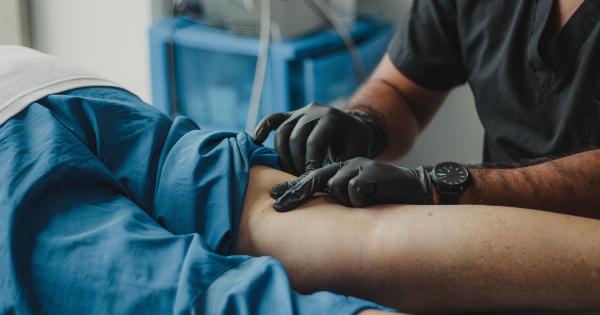Knee replacement surgery, also known as knee arthroplasty, is a common procedure performed to relieve pain and restore function in individuals with severe knee damage or arthritis.
Over the years, advancements in medical technology and surgical techniques have led to the development of next-generation knee replacement techniques, which aim to improve patient outcomes, minimize recovery time, and provide long-lasting results. In this article, we will discuss some of the latest advancements in knee replacement techniques that are shaping the future of orthopedic surgery.
Computer-Assisted Knee Replacement
One significant advancement in knee replacement techniques is the use of computer-assisted surgery (CAS) systems.
These systems provide real-time information to the surgeons during the procedure, allowing for more accurate alignment and placement of the artificial joint components. CAS systems use imaging technology, such as CT scans or MRIs, to generate 3D models of the patient’s knee.
This information is then used to plan the surgery and guide the surgeon throughout the procedure, resulting in improved implant positioning.
Robotic-Assisted Knee Replacement
Robotic-assisted knee replacement is another cutting-edge technique that combines computer technology with robotic arms to assist surgeons during the procedure.
This technique allows for precise bone preparation, implant placement, and ligament balancing. Robotic arms are controlled by the surgeon, who uses a console with a high-definition monitor to visualize the patient’s anatomy and guide the robotic arm movements.
With the help of robotics, surgeons can achieve greater accuracy, reduce human error, and optimize the fit and alignment of the prosthetic components.
Minimally Invasive Knee Replacement
In recent years, there has been a shift towards minimally invasive knee replacement techniques. Traditional knee replacement surgery involves a large incision, muscle and tissue dissection, and prolonged recovery time.
Minimally invasive techniques aim to reduce the size of the incision, minimize tissue damage, and improve post-operative outcomes. These techniques can be performed using specialized instruments, smaller incisions, and advanced imaging technology. Minimally invasive knee replacement allows for faster recovery, less pain, and reduced scarring compared to traditional surgery.
Customized Knee Implants
Customized knee implants are gaining popularity in the field of knee replacement surgery. These implants are tailor-made for each patient based on their unique anatomy.
The process begins with pre-surgical imaging, such as CT scans or MRIs, which are used to create a 3D model of the patient’s knee. The implant is then designed and manufactured to match the patient’s precise specifications. Customized knee implants offer better fit, stability, and durability, leading to improved functionality and longevity of the artificial joint.
Implant Materials
The choice of implant materials has also evolved in recent years. Traditional knee replacement implants were primarily composed of metal and polyethylene components. However, advancements in materials science have introduced new options.
For example, the use of ceramic implants has become more prevalent due to their durability, wear resistance, and compatibility with the human body. Additionally, the development of improved polyethylene compounds has led to longer-lasting and more biocompatible implants. These advancements in implant materials contribute to the overall success and longevity of knee replacement procedures.
Pain Management Techniques
In addition to advancements in surgical techniques and implant materials, next-generation knee replacement techniques also focus on optimizing pain management strategies.
Improved pain management allows for faster rehabilitation, early mobilization, and reduced hospital stays. Multimodal pain control approaches, including the use of regional anesthesia, local anesthetic injections, and non-opioid pain medications, help patients achieve better pain relief with fewer side effects.
By effectively managing pain, patients can actively participate in their rehabilitation and experience a smoother recovery process.
Biological Solutions
Researchers and scientists are exploring the potential of biological solutions to enhance knee replacement outcomes. One promising area of research is the development of bioactive coatings for implants.
These coatings, made from substances like hydrogels or growth factors, stimulate bone growth and integration with the implant, reducing the risk of loosening or implant failure. Furthermore, regenerative medicine techniques, such as stem cell therapy or tissue engineering, hold promising possibilities for regenerating damaged cartilage and improving the overall success rate of knee replacement procedures.
Improved Rehabilitation Protocols
Next-generation knee replacement techniques also emphasize the importance of rehabilitative care post-surgery.
Innovative rehabilitation protocols, including accelerated rehabilitation programs and supervised physical therapy, play a vital role in optimizing patient outcomes. These protocols focus on early mobilization, strengthening exercises, functional training, and patient education.
By implementing evidence-based rehabilitation strategies, patients can regain mobility, improve joint function, and resume their daily activities more quickly and effectively.
Outpatient Knee Replacement
Outpatient knee replacement, also known as same-day surgery or ambulatory knee replacement, is an emerging trend in knee replacement techniques.
Traditionally, knee replacement surgery required a hospital stay of several days for monitoring and recovery. However, advancements in surgical techniques, anesthesia, and pain management now allow select patients to undergo knee replacement as an outpatient procedure.
Outpatient knee replacement offers several benefits, including reduced risk of hospital-acquired infections, improved patient comfort, and decreased healthcare costs.
Conclusion
Next-generation knee replacement techniques have revolutionized the field of orthopedic surgery and continue to improve patient outcomes and quality of life.
From computer-assisted and robotic-assisted surgeries to customized implants, patients now have access to advanced treatment options that offer greater precision, faster recovery, and increased longevity of the artificial joint.
These innovations, coupled with improved pain management, rehabilitation protocols, and ongoing research in regenerative medicine, shape the future of knee replacement surgery and hold the promise of even better outcomes for individuals suffering from knee pain and dysfunction.





























